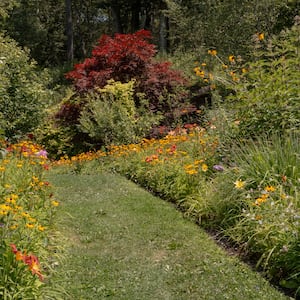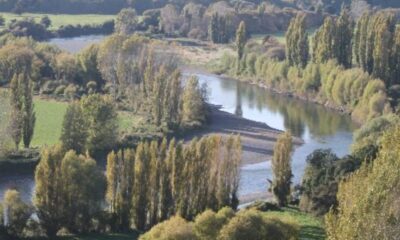Health
Cultivating Wellness: How to Grow a Healing Garden This Spring

As spring approaches, horticulturalists and herbalists are emphasizing the health benefits of cultivating gardens filled with medicinal plants. Gardening not only provides physical activity but also promotes mental wellness, with research indicating that engaging with nature can reduce hypertension, heart disease, and stress levels. Many enthusiasts are now exploring how to harness the curative properties of plants right in their own backyards.
According to Devon Young, a herbalist and author of The Homegrown Herbal Apothecary, many gardeners underestimate the therapeutic value of common plants. “People are often surprised by how many plants have medicinal and therapeutic value,” she stated. A quick online search reveals that several backyard varieties, from roses to hibiscus and Douglas fir needles, possess health benefits. However, caution is necessary as some plants can be toxic to humans and pets. Resources such as the Lady Bird Johnson Wildflower Center and the Plants for a Future databases can assist gardeners in identifying safe options.
Choosing Native Plants for Health and Ecology
Creating a garden that promotes well-being starts with selecting the right plants. Bridghe McCracken, founder of Helia Land Design in West Stockbridge, Massachusetts, recommends prioritizing native plants. These species often require less maintenance, such as watering and fertilizing, and they create a supportive environment for local wildlife. “When you’re working with native plants, you’re going to have a garden that is amazing for bees… for pollinating butterflies, for a whole spectrum of insects,” McCracken explained.
Among her favorite native plants are purple angelica, which features striking umbrella-like blooms, and various types of Monarda, also known as bee balm. “Monarda punctata, in particular, is just gorgeous, with its colored bracts, and it stays in bloom for six to eight weeks,” she noted. Bee balm can also be used as an antiseptic and cold remedy, enhancing its appeal for health-conscious gardeners.
In residential projects, Ethan Dropkin, a designer with Larry Weaner Landscape Associates, adopts a similar philosophy. He creates human-centric areas near homes while allowing naturalistic landscapes to flourish further out. His designs often include native plants with medicinal uses, such as purple Echinacea, which is renowned for its immune-boosting properties, and yarrow, known for its antibacterial qualities.
Integrating Herbal Remedies in the Garden
The process of preparing herbal remedies varies depending on the plants used, as Young explains. “Anything with a fairly thin leaf or delicate flower can hang dry,” she noted. For more succulent plants, using a dehydrator is recommended, while resinous plants may require gentle heat in an oven. “As an herbalist, I like to use the whole plant — the roots, the stem, the leaves, and the flowers,” she added. This holistic approach aligns with the growing interest in wellness gardening, which merges ecological awareness with personal health.
Dara Saville, founder of Albuquerque Herbalism, highlights the diverse motivations behind wellness gardening. Some participants are drawn to ecological principles, while others seek to connect with Indigenous healing traditions. “Many are people who have chronic health problems and are not receiving effective treatment through mainstream health care paradigms, so they’re taking matters into their own hands,” Saville explained.
Her own gardening style embraces a more natural approach, allowing plants to dictate their placement. “I let plants migrate around and show me where they want to be and who they want to be next to,” she said. One of her preferred plants is yerba mansa, which boasts numerous health benefits, including anti-inflammatory and antimicrobial properties.
Landscape designer Mihalis Petrou from New York City has made it his mission to showcase the beauty of native wellness plants. After transforming an abandoned lot in Astoria into a vibrant garden, he began utilizing these plants in fashion shoots and events. “Instead of going to the flower market, I would head to my garden and harvest fresh native plants that look spectacular,” Petrou shared. He incorporates plants such as bee balm and Echinacea into his designs and also brews herbal teas from them.
Both Young and Petrou draw parallels between gardening and other forms of art. “Art is therapy and landscaping is art,” Young emphasized. The act of nurturing a wellness garden becomes a form of medicine in itself, improving not only physical health but also psychological well-being.
As spring arrives, the opportunity to cultivate a healing garden presents itself to many aspiring gardeners. By focusing on native plants with medicinal properties, individuals can create spaces that enhance both personal health and ecological balance.
-

 World3 months ago
World3 months agoTest Your Knowledge: Take the Herald’s Afternoon Quiz Today
-

 Sports3 months ago
Sports3 months agoPM Faces Backlash from Fans During Netball Trophy Ceremony
-

 Lifestyle3 months ago
Lifestyle3 months agoDunedin Designers Win Top Award at Hokonui Fashion Event
-

 Sports3 months ago
Sports3 months agoLiam Lawson Launches New Era for Racing Bulls with Strong Start
-

 Lifestyle3 months ago
Lifestyle3 months agoDisney Fan Reveals Dress Code Tips for Park Visitors
-

 World3 months ago
World3 months agoCoalition Forms to Preserve Māori Wards in Hawke’s Bay
-

 Health3 months ago
Health3 months agoWalking Faster Offers Major Health Benefits for Older Adults
-

 Politics3 months ago
Politics3 months agoScots Rally with Humor and Music to Protest Trump’s Visit
-

 Top Stories3 months ago
Top Stories3 months agoUK and India Finalize Trade Deal to Boost Economic Ties
-

 World3 months ago
World3 months agoHuntly Begins Water Pipe Flushing to Resolve Brown Water Issue
-

 Entertainment3 months ago
Entertainment3 months agoExperience the Excitement of ‘Chief of War’ in Oʻahu
-

 Science3 months ago
Science3 months agoNew Interactive Map Reveals Wairarapa Valley’s Geological Secrets









